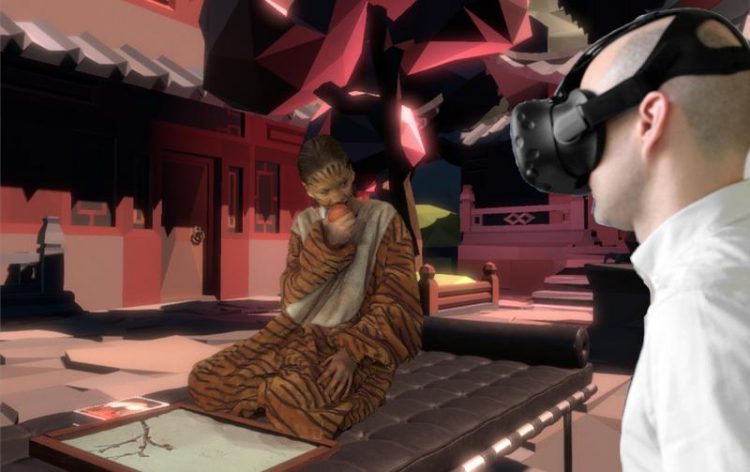Virtual Reality: 3D Human Body Reconstruction from Fraunhofer HHI digitizes human beings

Virtual Reality: 3D Human Body Reconstruction from Fraunhofer HHI digitizes human beings © Fraunhofer HHI
Fraunhofer HHI researchers have developed a camera system that films people with a perfect three-dimensional impression. The core of this system is a stereo camera: Just as people do it with their two eyes, the camera records the person with two lenses.
This stereoscopic vision results in distances being estimated well, because both eyes look at an object from a slightly different angle. The result is a three-dimensional impression. Recording a person in detail from all directions takes more than one camera.
Fraunhofer HHI is currently using more than 30 cameras to map a human. Each camera only captures a part of the person. The challenge is to merge the individual camera images together so that a realistic overall picture is produced.
The system includes more than just the camera technology. The researchers have developed algorithms that can quickly extract depth information from the stereoscopic camera images. This is necessary in order to calculate the 3D form of a captured person.
The computer calculates a virtual model of the human, which is then transferred into the virtual scene. The cameras perceive the surface shape with many details. In this way even small wrinkles, e.g. on the clothes of the person, can be shown. The model has a natural and realistic appearance.
Showing every gesture
The fusing of the 3D information from the various camera images only takes a few seconds – then the illusion is perfect. The system transmits the three-dimensional dynamic model of a person rapidly into Virtual Reality. A person can move freely in a dedicated capture area. The virtual image portrays every gesture and movement realistically.
https://www.hhi.fraunhofer.de/en/press-media/press-releases.html
Media Contact
All latest news from the category: Trade Fair News
Newest articles

A universal framework for spatial biology
SpatialData is a freely accessible tool to unify and integrate data from different omics technologies accounting for spatial information, which can provide holistic insights into health and disease. Biological processes…

How complex biological processes arise
A $20 million grant from the U.S. National Science Foundation (NSF) will support the establishment and operation of the National Synthesis Center for Emergence in the Molecular and Cellular Sciences (NCEMS) at…

Airborne single-photon lidar system achieves high-resolution 3D imaging
Compact, low-power system opens doors for photon-efficient drone and satellite-based environmental monitoring and mapping. Researchers have developed a compact and lightweight single-photon airborne lidar system that can acquire high-resolution 3D…





















